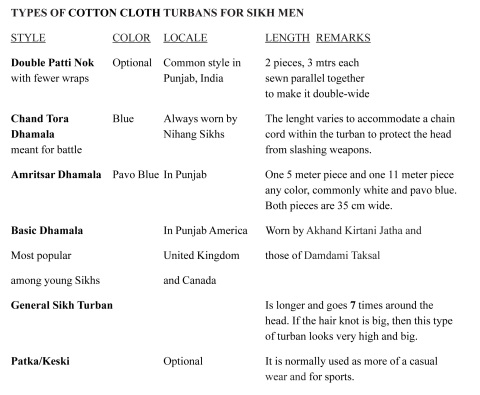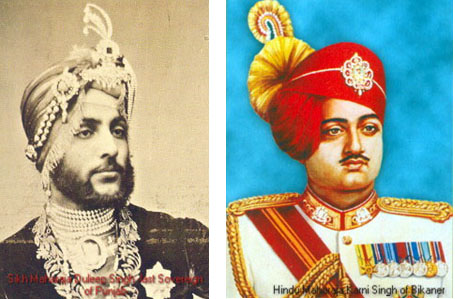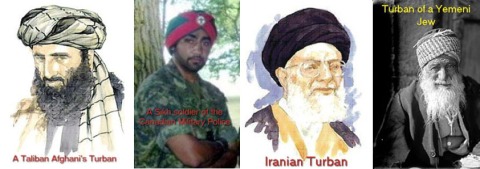THE VARIETY OF STYLES AND COLORS OF TURBANS
April 16, 2010
The turban, which North Americans find confusing and even comical, communicates a great deal about a person from South and Central Asia. The fabric, the length of the turban, its color and the way it is folded all speak volumes about the man wearing it.
The style of a turban depends upon the background of the person wearing it. Muslims of Afghanistan as well as Hindus and Sikhs of rural India wear a kind of quick wrap-around. In contrast, it can take anywhere between five minutes and two hours to put on an elegant turban, depending on the style. Many stories are told about Guru Gobind Singh who personally tied beautiful dumalas (turbans) on the heads of both his elder sons, armed them and sent them to the battlefield at Chamkaur Sahib where they both died as martyrs.
The turban has been a formal and respectable dress since ancient times. Click to view a painting of Guru Nanak, the Guru who founded the Sikh faith, wearing the turban according to the style of the region he had visited to preach. A saffron-colored turban is especially identified with courage, sacrifice and martyrdom. In the Punjabi culture, those who have served the community are traditionally honored with turbans. In contrast, a black turban can symbolize the struggle over sin, and the blue turban signifies service. Modern Sikhs have their own reasons for choosing one color over another. Why does Indian Prime Minister Manmohan Singh so often opt for blue turbans? It is the color of Cambridge, his alma mater.
“My memories of my days in Cambridge are deep,” the prime minister said after being conferred an honorary doctorate of law by the Duke of Edinburgh, Prince Philip. “The color blue is one of my favorites and is often seen on my head.” Turban wearers believe that by balancing the chakras of the body, the turban gives you a cranial self-adjustment for clear thinking and deep thought.
The turban also signifies purity. Sikhs are considered protectors of the weak, even among the non-Sikhs in India. In the 18th and 19th centuries, Sikh warriors were very few in numbers and constantly in battles with the Muslim rulers who had put a prize on their head. If someone could behead a Sikh, he would get 10 Rupees reward which was lot of money in those days. Therefore, the Sikhs moved from village to village at night to hide from the enemy. The women folk let them inside their houses. It was a common saying in Punjab: Aye nihang, booha khol de nishang (“The Sikh soldiers are at the door. Dear woman! Go ahead and open the door without any fear whatsoever.”)
This was in the 18th century. But I had a personal experience in 1992. I was driving my car in New Delhi passing besides Jesus and Mary College for Women in the diplomatic enclave. I saw four young girls, who appeared to be from the same college because they had books in their hands, thumbing me for a lift. I stopped, and they got in. They were my daughter’s age group. I said, “Times are not good. You should be very careful thumbing for a lift.” One of them said, “But you are a Sardar.” (Meaning that there is no need to worry about a turbaned Sikh.)
Here is a variety of wrap-around turbans worn by Sikhs, Muslims, and Hindus:
Sikhs take pride in the evenly spaced pleats, especially in their peaked turbans.
While the Sikhs wear their turbans to advertise their identity, the Taliban wears all shades of turbans to conceal their identity. And when an American sees a weapon in the hand of a turbaned person, then the stereotyped image of a Muslim terrorist is projected. And if a weapon is not visible, then the same turban wearer could be beaming a disarming smile at you.
Here are turbans, of all three religions, with a variety of styles as a feast, I hope, for the eyes of Americans.
(Some photos in this post are compliments of The Seattle Times.)
WHY DO SIKHS WEAR TURBANS?
April 8, 2010
In 2003, on my first visit to Boston, somewhere between Hyatt Regency and West Street, I was surprised to hear someone say, “Sat Siri Akal” (‘God is Truth’), the standard Sikh greeting. A young man with his long hair tied back with a ribbon was smiling at me. I knew he was a Sikh because of the steel bangle dangling from his right wrist. I asked automatically, “What happened to your turban?”
Pointing over his shoulder at the store behind him, he said “I have been working here for couple of years now. When I wanted to apply for my green card for Permanent Residence, I asked them to recommend my case.”
“So?”
He replied, “They said, ‘Remove your turban and we will do so’.”
“I can see you have kept your hair.” I said.
“Yes, uncle. My hair is dear to me and I won’t cut it.”
For Americans like the store owner who employed this young man, public show of religious beliefs has caused controversy in every generation. When I first began coming to America in the sixties, many people doubted that John F. Kennedy could do a good job as President because of his Catholicism. Kennedy downplayed his religion, just as Larry Johnson downplays his Muslim faith today. This low-profile approach to religion does not work for Sikhs because their religious identity is expressed in their way of life, a bold brave statement with high personal standards.
 When Guru Gobind Singh, the Tenth Guru of the Sikhs, made the wearing of the Five Ks in March 1699 as their prominently visible identity and religious duty, he was creating hawks out of sparrows. Nay, he was creating lions out of sheep.
When Guru Gobind Singh, the Tenth Guru of the Sikhs, made the wearing of the Five Ks in March 1699 as their prominently visible identity and religious duty, he was creating hawks out of sparrows. Nay, he was creating lions out of sheep.
Lions out of sheep? Yes, the situation was not very different from the India of today facing Islamic terrorism. The Muslim rulers of India had made a law that non-Muslims dare not wear a sword or ride a horse or an elephant or a palanquin or wear a turban other than those who submitted to Islam. Thus, the minority Muslims forced the Hindus and Sikhs, a majority, to convert to Islam. As a challenge to the Muslim rule, the Tenth Guru ordained his Sikhs to keep the Five Ks.
The first K is Kesh – long uncut hair, a sign of spiritual evolution.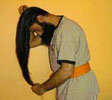 The Guru knew that being of a very high spiritual norm was important if his followers were to be lions. With a mane like a lion, the Sikh could have a lion’s heart. In order to take good care of the hair, the turban is worn to cover it. I never go out without my turban.
The Guru knew that being of a very high spiritual norm was important if his followers were to be lions. With a mane like a lion, the Sikh could have a lion’s heart. In order to take good care of the hair, the turban is worn to cover it. I never go out without my turban.
 The second K is Kanga -a comb to keep the long uncut hair cleaned and aired. The other three Ks include the Kirpan – sword; a Kara, steel bangle; and Katchha, complicated white underwear.
The second K is Kanga -a comb to keep the long uncut hair cleaned and aired. The other three Ks include the Kirpan – sword; a Kara, steel bangle; and Katchha, complicated white underwear.
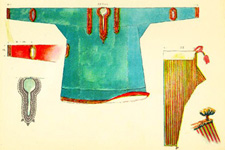 The practical Sikh mind welcomes these daily reminders of the Tenth Guru’s teachings. The Five Ks to a pious Sikh are not mere ornaments but tools for living a righteous life.
The practical Sikh mind welcomes these daily reminders of the Tenth Guru’s teachings. The Five Ks to a pious Sikh are not mere ornaments but tools for living a righteous life.
 To deprive a Sikh of his turban would be like asking an American to give up his flag.
To deprive a Sikh of his turban would be like asking an American to give up his flag.




